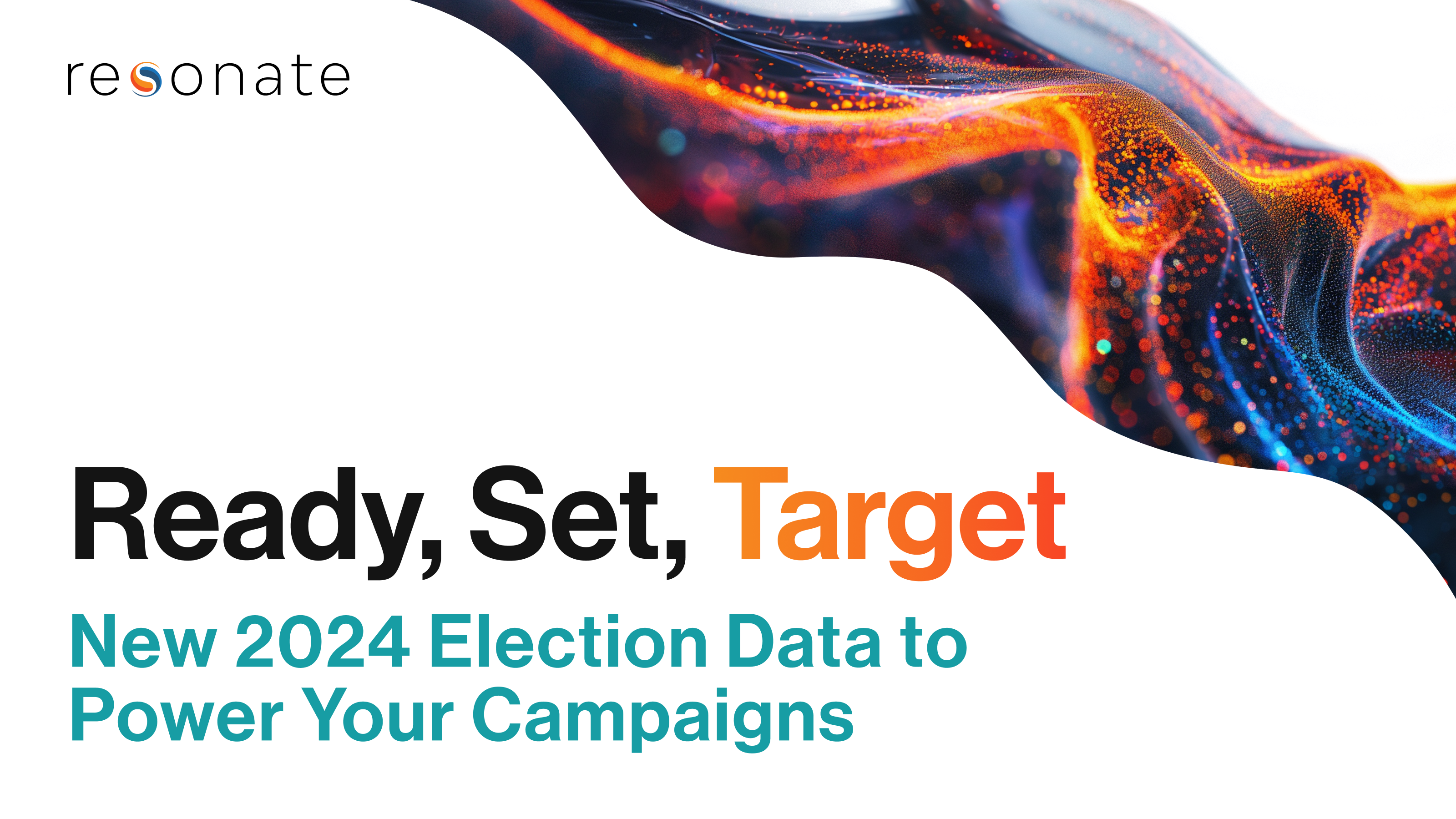As we approach the final stretch of the 2024 presidential election, the landscape has changed in ways that few could have predicted just months ago. With every week bringing new developments, the importance of having the most up-to-date data cannot be overstated. In an election cycle where the stakes are incredibly high, real-time insights are no longer a luxury but a necessity.
At Resonate, we’ve been tracking these changes closely, ensuring that our data is constantly updated to reflect the latest shifts in voter sentiment and behavior. Our ability to deliver target voters with real-time data allows campaigns to remain agile, responding to new challenges and opportunities as they arise. This election is not just about what has happened; it’s about what’s happening now—and how you can leverage that information to shape your strategy.
Resonate has over 1500 political attributes for building, modeling, and sizing voter audiences that you can target across all digital channels through managed media. Here’s an overview of the latest additions to our targeting and activation capabilities, designed to power your campaign strategy in these critical final weeks leading up to November 5.
Voting Intentions
- Likelihood to Vote: How likely respondents are to vote in the November 2024 presidential election, from those unlikely to vote to those definitely planning to cast their ballot. This insight helps prioritize efforts to mobilize the electorate.
Presidential Candidate Preferences
- Preferred Candidate: Track voter preferences if the election were held today, including support for major party candidates (Democrat Kamala Harris, Republican Donald Trump), third-party options, or those still undecided.
- Third-Party Considerations: Understand preferences among third-party candidates like Robert F. Kennedy Jr., Cornel West, Chase Oliver, Jill Stein, and others, offering a nuanced view of potential vote splits.
- Current Leanings: Identify leanings toward specific candidates or understand where voter indecision lies.
Impact of Political Events on Voting Behavior
- Vice-Presidential Pick: Evaluate the influence of Donald Trump selecting JD Vance as his running mate on voters’ likelihood to support his candidacy.
- Biden’s Announcement: Measure the effects of President Joe Biden’s decision not to seek re-election and his endorsement of Kamala Harris on voter participation and candidate preferences.
- Nominee Changes: Assess potential changes in voting likelihood and preferences if Donald Trump is not the Republican nominee, including possible shifts to other candidates or abstention from voting.
Trust in Candidates Across Various Issues
- Economic Management: Gauge voter trust in Kamala Harris and the Democratic Party versus Donald Trump and the Republican Party on handling jobs and the economy.
- Health Care: Understand confidence in each party’s ability to manage health care effectively.
- Fiscal Policy: Measure trust in handling taxes and government spending.
- Immigration: Evaluate perceptions of each party’s competence in managing immigration.
- Foreign Policy: Track trust in handling international relations and foreign policy.
- Terrorism: Assess confidence in managing terrorism threats.
- Environmental Issues: Understand trust in addressing environmental challenges.
- Education: Measure perceptions of each party’s ability to handle education policies.
- Abortion: Track trust in managing abortion-related policies.
- Crime and Public Safety: Gauge confidence in handling crime and ensuring public safety.
- Effective Governance: Assess overall trust in each party’s ability to govern effectively.
- Israel-Palestine Situation: Measure trust in handling the specific situation in Israel and Palestine.
Perceptions of Diversity in Public Office
- Gender Representation: Understand views on the impact of electing more women to public office, from negative to positive effects.
- Racial and Ethnic Representation: Measure opinions on the impact of electing more Black, Hispanic, Asian, or Native American individuals to public office, and the expected outcomes.
Response to Trump’s Assassination Attempt
- Attribution of Blame: Analyze who or what respondents blame for the attempted assassination of former President Donald Trump, considering factors like the shooter, political rhetoric, security failures, gun regulations, normalization of political violence, government actions, or other reasons.
Support for Project 2025
- Support Levels: Assess respondents’ support or opposition to Project 2025, categorizing them into strong opposition, some opposition, neutrality, some support, strong support, or uncertainty.
Concerns About Donald Trump’s Health and Fitness
- Health Concerns: Evaluate the extent to which respondents are concerned about the health and fitness of former President Donald Trump, from not concerned to extremely concerned.
With these insights, your campaign can refine its messaging, allocate resources more effectively, and engage voters with precision across all digital channels. The next 10 weeks are critical—let’s make sure you’re equipped with the best data to power your strategy and secure the victory. Talk to us to learn how we can build you a winning campaign with this new, adaptable set of data.



